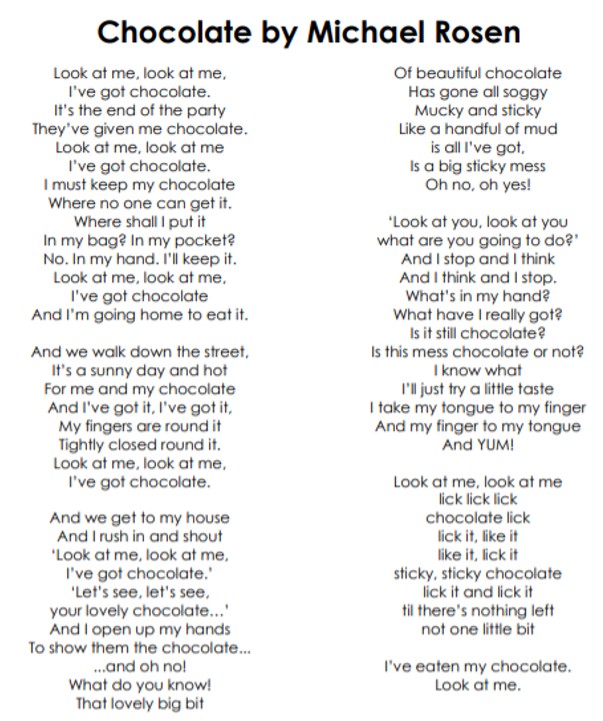7 July is World Chocolate Day - and is a great opportunity to explore this wonderful material with your classes.
Whenever I think of chocolate, I instantly go to Michael Rosen’s brilliant poem 'Chocolate'.

I would start the topic by sharing out a packet of chocolate buttons with the class. Each child holds onto their button while we read the poem. Hopefully if the children’s hands are warm enough, they will end up with a messy, chocolate coated hand. It is a lovely engaging introduction and exploration of melting. Can the children use the correct vocabulary? I usually let them eat the button at the end, but you could ask them if they think they could get the button back in its original form, therefore exploring the topic of reversible changes.
The Royal Society of Chemistry has some wonderful resources in their Edible Experiments which explore the melting of chocolate. With older pupils you could explore the tempering activities, where chocolate is melted at different temperatures and then tasted, to see if they can get the perfect melting temperature for chocolate. A similar - and perhaps easier - investigation is where you can see which type of chocolate melts first when heated. Try white, milk and dark chocolate. Can the children suggest chocolates that would be best for selling to hot countries?
They could then explore packaging for selling chocolates in warmer climates. This links well into a study of the iconic chocolate book - Charlie and the Chocolate Factory by Roald Dahl. There are so many links to make to this wonderful story, but the one I love to explore is the story of Prince Pondicherry. He tasks Willy Wonka with building him a palace made from chocolate, which Mr Wonka does. He is warned that he should eat it immediately as he lives in India and it will soon melt. He of course does not want to ruin his beautiful palace by eating it, and therefore suffers the obvious conclusion to his story. Ask the children which chocolate would have been best to build the palace from...then perhaps ask them what would have been a much better building material for a palace in India.
Building, excuse the pun, from this, chocolate actually does make quite a good building material, as is explored in the chocolate welding activity found on the STEM website. You could also explore how strong different chocolate bars are by using them to build a bridge and add masses to the top. I’d like to think a Boost bar would make a particularly effective bridge!
While considering the properties of chocolate bars, you could challenge the children to take part in the Curly Wurly stretching championships. They have 3 minutes to stretch a Curly Wurly as far as possible. If it snaps, they can’t reattach, and have to think about stretching, melting, pulling and manipulating their Curly Wurly to reach the longest length. The current World Record is 426.2cm! Can they beat this? What properties of a Curly Wurly make it particularly effective for this challenge?
Living in York we are very lucky as we have chocolate all around us. I personally have a constant smell of KitKats in my house. Although we only have Nestle left of the big three factories, there are numerous small outlets where you can take groups of children to experience chocolate making first hand. Perhaps you could approach your local chocolate shop and see if you could visit, or they could spend some time with your children in school showing how chocolate is made. The children could research how chocolate is made and then have a go at making their own. The STEM ambassador programme could help you find a local chocolatier to share their expertise with your class.
What are you planning for World Chocolate Day? Join the conversation on STEM Community here.
